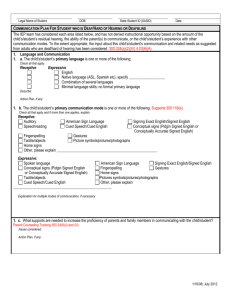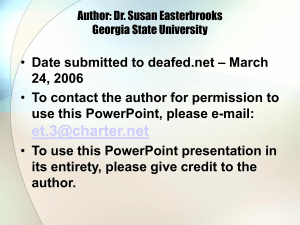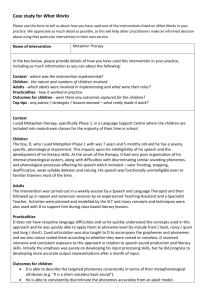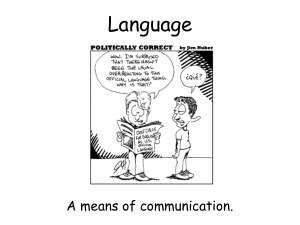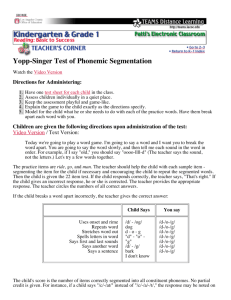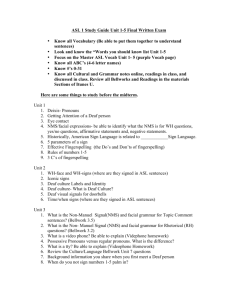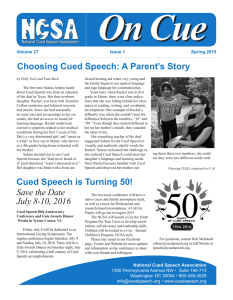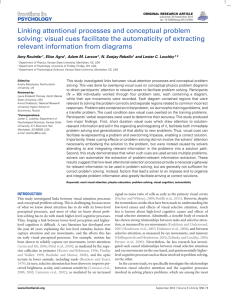American Sign Language
advertisement
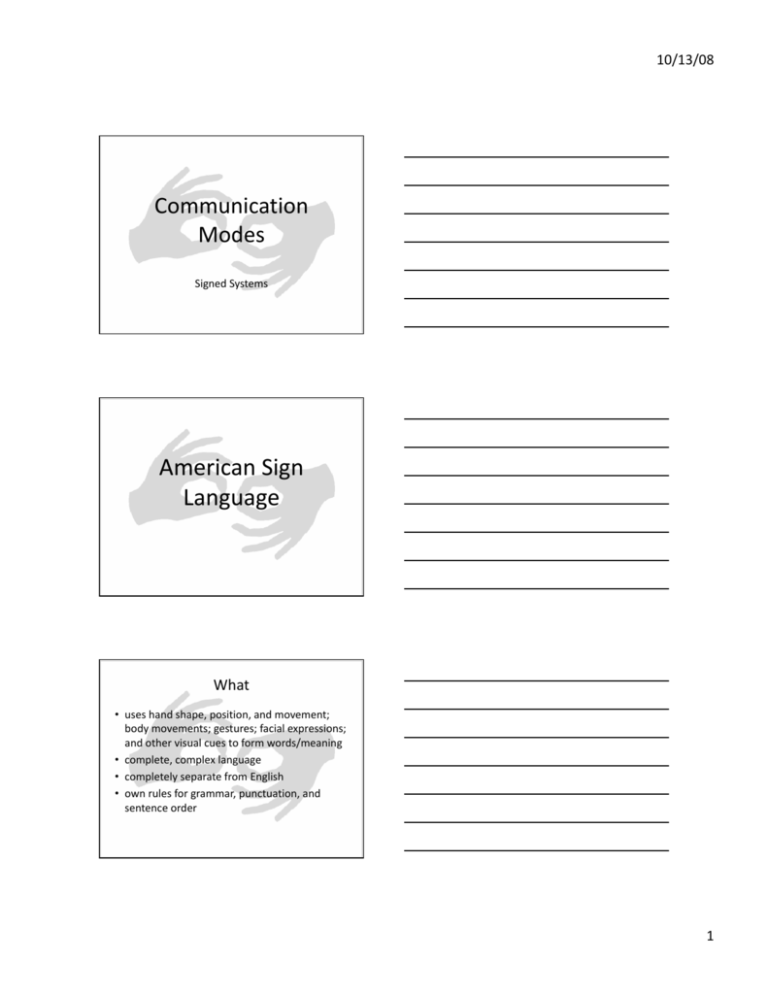
10/13/08 Communication Modes Signed Systems American Sign Language What • uses hand shape, position, and movement; body movements; gestures; facial expressions; and other visual cues to form words/meaning • complete, complex language • completely separate from English • own rules for grammar, punctuation, and sentence order 1 10/13/08 Example • Question‐ – Lean forward – Signal with eyebrows and facial expression Who Regional variations 4th most commonly used language in US Used by American Deaf Community Used in varying degrees in Canada, Philippines, Ghana, Nigeria, Chad, Burkina Faso, Gabon, Democratic Republic of the Congo, Central African Republic, Côte d'Ivoire, Mauritania, Kenya, Madagascar, Benin, Togo, Zimbabwe, Singapore, China (Hong Kong) and Guatemala. • One of more than 100 sign languages in the world • • • • History • Exact beginnings unclear • Evolved from early American sign and French Sign Language introduced by Laurent Clerc in 1817 at school in Hartford, CN • Modern ASL and FSL share some elements, including a substantial amount of vocabulary 2 10/13/08 ASL in Action http://www.youtube.com/watch?v=YfI5i_i4Dwo&feature=related http://www.youtube.com/watch?v=m5‐Tu9KJPzs&feature=related Cued Speech What • mouth movements of speech combine with “cues” to make all the sounds (phonemes) of spoken language look different. • eight handshapes distinguish consonant phonemes • four locations near the mouth distinguish vowel phonemes • handshape and a location together cue a syllable. 3 10/13/08 Why • Literacy is the original and primary goal of Cued Speech, by providing the appropriate phonemic language base for learning to read. Cued Speech also supports the development of lipreading, auditory discrimination, and speech Speech • focusing attention on the mouth • reinforcing the pattern of phonemes within a word or phrase • identifying the speech sound(s) and syllables being targeted • being a motoric reminder and trigger of speech production • integrating sound, sight, and motor aspects to make learning more fun! Language • Without additional disabilities, deaf children with four or more years of consistent use of Cued Speech master the syntax and grammar of spoken language. • Deaf students reach their full language and literacy potential if their family members and educators continue to communicate consistently with Cued Speech. • Deaf cuers often learn two or more languages. 4 10/13/08 Reading • cues every phoneme • focuses attention on the sequence of sounds (phonemes) and syllables of language provides visual access to rhyming • enables the child to develop a complete phonemic model of language • can solve the literacy problem for most deaf children Cued Speech in Action http://www.youtube.com/watch?v=plPw4H‐ZsMg Rochester Method • Combination of oral language and fingerspelling • Signs not used • Traditional English used 5 10/13/08 Other Nonverbal/Sign • Fingerspelling – Used alone of with other sign systems • Seeing Essential English (SEE 1) – ASL based – Breaks words into morphemes – Uses morphological markers (plural, past tense) • Signing Exact English (SEE 2) – Precise English word order 6
